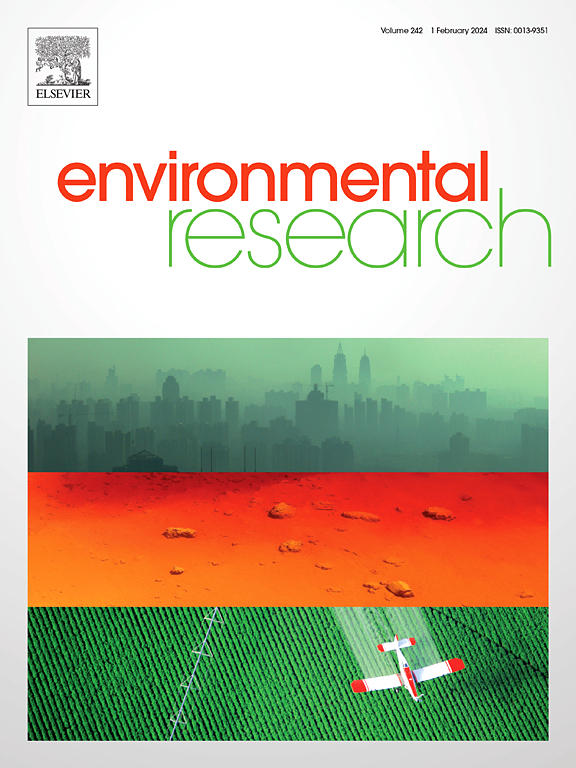Trend and inequality in livestock CO2 emission intensity: Evidence from 341 prefecture-level cities from 2006 to 2022 in China
IF 7.7
2区 环境科学与生态学
Q1 ENVIRONMENTAL SCIENCES
引用次数: 0
Abstract
As global warming intensifies, the livestock sector—a major source of carbon emission in agriculture—has gained growing attention on fair and green mitigation. However, existing studies have rarely focused on the spatiotemporal evolution of CO2 emission intensity (CEI) and its inequality drivers. This study conducted a more detailed analysis at the prefecture-level city scale. Specifically, we estimated livestock CO2 emission (CE) across 341 prefecture-level cities in China from 2006 to 2022. Using the standard deviation ellipse and spatial autocorrelation models, we analyzed the spatiotemporal distribution of CEI and further applied the Theil index and Shapley decomposition method to evaluate CEI inequality and its influencing factors. The results revealed that: (1) Enteric fermentation constituted the primary source of CE at 61.41 %, with cattle contributing the largest proportion (56.47 %), followed by pigs (23.43 %) and sheep/goats (16.09 %) (2) From 2006 to 2022, CEI declined from 3.09 t/104 yuan to 1.39 t/104 yuan, with an average annual decline of 5.1 %. (3) Low CEI values were concentrated in economically developed regions east of the Hu Line (a population density demarcation), while high CEI values were clustered in the west. The center of CEI shifted from southwest to northwest. (4) The Theil index showed a marked increase from 0.535 to 0.651, primarily driven by intra-regional inequality. Ruminant CO2 emission was the dominant contributor to CEI inequality (67.6 %), while environmental regulations had the greatest impact in the northwest and southwest regions. These findings provide insights for strengthening regional coordination and promoting carbon justice.
2006 - 2022年中国341个地级市畜禽二氧化碳排放强度变化趋势与不平等分析
随着全球变暖加剧,畜牧业——农业碳排放的主要来源——越来越受到公平和绿色减排的关注。然而,现有研究很少关注二氧化碳排放强度(CEI)的时空演变及其不平等驱动因素。本研究在地级市尺度上进行了更详细的分析。具体而言,我们估算了2006年至2022年中国341个地级市的牲畜二氧化碳排放(CE)。利用标准差椭圆和空间自相关模型分析了CEI的时空分布,并进一步应用Theil指数和Shapley分解方法评价了CEI不等式及其影响因素。结果表明:(1)肠道发酵是主要的CE来源,占61.41%,其中牛贡献最大(56.47%),其次是猪(23.43%)和绵羊/山羊(16.09%)。(2)2006 - 2022年,CEI从3.09 t/104元下降到1.39 t/104元,年均下降5.1%。③低CEI值集中在人口密度分界线胡线以东的经济发达地区,高CEI值集中在胡线以西。CEI中心由西南向西北转移。(4)泰尔指数从0.535显著上升至0.651,主要受区域内不平等驱动。反刍动物CO2排放是影响CEI不平等的主要因素(67.6%),而环境法规对西北和西南地区的影响最大。这些发现为加强区域协调和促进碳正义提供了启示。
本文章由计算机程序翻译,如有差异,请以英文原文为准。
求助全文
约1分钟内获得全文
求助全文
来源期刊

Environmental Research
环境科学-公共卫生、环境卫生与职业卫生
CiteScore
12.60
自引率
8.40%
发文量
2480
审稿时长
4.7 months
期刊介绍:
The Environmental Research journal presents a broad range of interdisciplinary research, focused on addressing worldwide environmental concerns and featuring innovative findings. Our publication strives to explore relevant anthropogenic issues across various environmental sectors, showcasing practical applications in real-life settings.
 求助内容:
求助内容: 应助结果提醒方式:
应助结果提醒方式:


